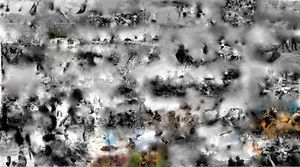Unintended Images: Difference between revisions
No edit summary |
No edit summary |
||
| (32 intermediate revisions by 4 users not shown) | |||
| Line 1: | Line 1: | ||
{{Graduation work | {{Graduation work | ||
|Creator=Artyom | |Creator=Artyom Kocharyan | ||
|Date=2015 | |Date=2015 | ||
|Bio=Artyom Kocharyan (AM) is visual artist based in Rotterdam. His work explores the | |Bio=Artyom Kocharyan (AM) is a visual artist based in Rotterdam. His work explores the peculiarities of current image culture, namely the relationship between images and technology that encompasses them. | ||
|Thumbnail= | |Thumbnail=Vietnam-3.jpg | ||
|Website=www.artyomkocharyan.com | |Website=http://www.artyomkocharyan.com/ | ||
|Description= | |Description=“Unintended Images” is a series of digital paintings based on Google’s image search. Artyom uses screenshots of search results, exploring the multiplicity of images within them. Drawing inspiration from painting, particularly those of Pieter Bruegel the Elder, that regardless their overcrowded aesthetics managed to retain a coherent composition. Artyom’s work reflects on the inability of Google’s search results to be read as a whole and attempts to introduce the coherence of a single image. | ||
|Catalog-Text1=Apocalypse (Viet-google.jpg - turned vertically+title+full page) | |||
}} | |||
<gallery> | |||
File:Vietnam-3.jpg | |||
File:Viet-google.jpg | |||
File:Bruegel.jpg|Pieter Bruegel the Elder “Netherlandish Proverbs” (1559) | |||
</gallery> | |||
As a result of image proliferation the online world become a space where images appear to their viewer within multiplicity. Google’s image search is a prime example of this phenomenon. By gathering multiple images inside one space, Google creates a new ‘large image’ that is being framed within our computer screens. However as a tool that is intended to find single images, Google disregards the aesthetic form of those ‘large images’, which it creates rather unintentionally. It arranges individual images within the search result according to their relevance to the topic rather then their visual coherence with each other. As a result those images appear as ‘broken’ and fragmented, and refuse to be read as a single image. | |||
Artyom’s work reflects on the incoherence that comes with the multiplicity of images within the online world. He uses screenshots of different Google search results, which he manipulates in Photoshop by using ‘healing’ and ‘patching’ tools. For his work Artyom draws inspiration from painting, particularly those of Pieter Bruegel the Elder, which regardless of their overcrowded and noisy aesthetics managed to retain their wholeness as an image. Those paintings took into account the gaze of the viewer, providing pathways through which the human eye could travel and explore the image. Similar Artyom’s work attempts to rehabilitate those ‘broken’ images and reintroduce a coherence that would allow them to be read as a whole. | |||
Latest revision as of 17:34, 13 February 2017
| Unintended Images | |
|---|---|
| Creator | Artyom Kocharyan |
| Year | 2015 |
| Bio | Artyom Kocharyan (AM) is a visual artist based in Rotterdam. His work explores the peculiarities of current image culture, namely the relationship between images and technology that encompasses them. |
| Thumbnail | |
| Website | http://www.artyomkocharyan.com/ |
“Unintended Images” is a series of digital paintings based on Google’s image search. Artyom uses screenshots of search results, exploring the multiplicity of images within them. Drawing inspiration from painting, particularly those of Pieter Bruegel the Elder, that regardless their overcrowded aesthetics managed to retain a coherent composition. Artyom’s work reflects on the inability of Google’s search results to be read as a whole and attempts to introduce the coherence of a single image.
As a result of image proliferation the online world become a space where images appear to their viewer within multiplicity. Google’s image search is a prime example of this phenomenon. By gathering multiple images inside one space, Google creates a new ‘large image’ that is being framed within our computer screens. However as a tool that is intended to find single images, Google disregards the aesthetic form of those ‘large images’, which it creates rather unintentionally. It arranges individual images within the search result according to their relevance to the topic rather then their visual coherence with each other. As a result those images appear as ‘broken’ and fragmented, and refuse to be read as a single image.
Artyom’s work reflects on the incoherence that comes with the multiplicity of images within the online world. He uses screenshots of different Google search results, which he manipulates in Photoshop by using ‘healing’ and ‘patching’ tools. For his work Artyom draws inspiration from painting, particularly those of Pieter Bruegel the Elder, which regardless of their overcrowded and noisy aesthetics managed to retain their wholeness as an image. Those paintings took into account the gaze of the viewer, providing pathways through which the human eye could travel and explore the image. Similar Artyom’s work attempts to rehabilitate those ‘broken’ images and reintroduce a coherence that would allow them to be read as a whole.




